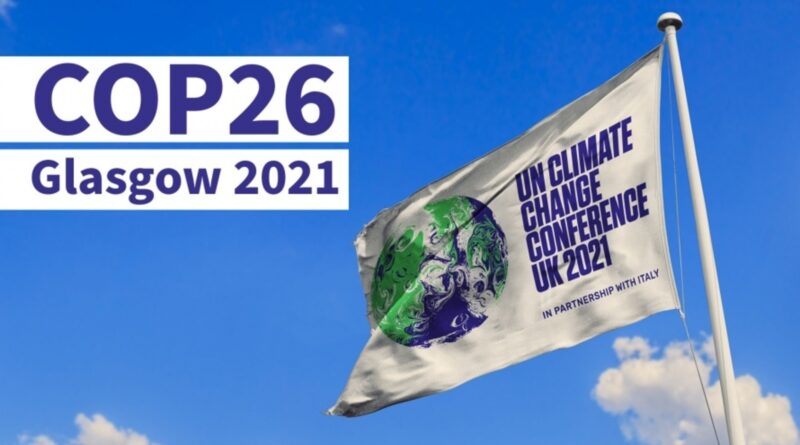A look into the COP-26 Glasgow summit
Before getting into the details of the COP-26 Glasgow, meeting let’s first know what COP-26 is?
COP stands for the conference of the parties. The Glasgow meeting was the 26th session of the conference of parties to the UN framework convention on climate change which took place from October,12 to November,12 this year. This session basically delivers two international agreements, the Kyoto protocol (1997) that expired last year, and the Paris agreement (2015), which now forms the foundation to tackle climate change. The main task for COP-26 was to finalize the rules and procedure for the implementation of the Paris agreement.
Main agenda of the COP-26 Glasgow
From the recent data, it has been found that the average global temperature of the earth was the highest this year. It was recorded as 15.8-degrees Celsius (60.4-degrees Fahrenheit). Global warming is responsible for the temperature rise. It was observed that CO2 is the major greenhouse gas that contributes to the warming of the atmosphere because many countries are still dependent on coal at a large scale. China alone produces 27.2% of the total coal while US and India produce 14.4% and 6.8% respectively. But we cannot blame CO2 alone for warming After all, CO2 is not the only greenhouse gas of concern; because a quarter of the warming is by methane itself. These two gases are the biggest hindrance in achieving net-zero.
New and enhanced climate actions- net-zero discussion
A discussion was made to reduce the emissions of these gases and some important conclusions were formed. Most of the countries have declared their net-zero targets by 2030 or 2050. China aims to achieve it by 2060 whereas India by 2070.
What is net-zero?
Net-zero simply means that the number of greenhouse gases released in the atmosphere got compensated in the form of absorption (afforestation) or physical removal using futuristic tech. Two countries Bhutan and Surinam have already achieved net-zero. In fact, Surinam is a net-negative carbon economy which means that it not only absorbs its own GHS emissions but also has a tendency to dilute neighbor’s countries too. These two countries have achieved it so early because of their low population and dense forest covers.
Another thing that is related to the reduction of emissions is mitigation. At Glasgow, one of the main discussions was to increase the ambition of mitigation. Mitigation means to somehow reduce the emission of greenhouse gases (GHGs). And at last developed countries were asked to at least double their contribution for adaption efforts in the developing countries. Moreover, countries were told to submit their NDCs (Nationally determined contributions or Targets) by at least 2022, and developed countries to mobilize at least US 1.3 trillion every year from 2030 onwards. All the money is required to fund the action needed to fight climate change. Money indeed is needed for mitigation, adaption, and monitoring actions countries are taking to keep global temperature rise beyond 2 degrees.
Goals of COP-26
- Goal number one, obviously, was to reach net-zero by the middle of this century . Moreover, to pursue an effort to limit global temperature rises to 1.5C and to keep them well below 2.0 above preindustrial times.
- The second, however, is to protect ourselves from the worst effect of climate change
- The third goal is to provide funding to developing countries in the form of climate finances to help them achieve their goal. and lastly to work together to achieve these goals
India’s ‘PANCHAMRIT’ to the world
India has designed a 5-point roadmap which it calls a Panchamrita. They are as follows-
- Take non-fossil and increase energy capacity to 500GW by 2030.
- Net-zero by 2070
- Meet 50% of energy requirement from renewable by 2030.
- Reduce total projected carbon emissions by 1bn tones from now to 2030.
- Reduce carbon intensity to less than 45% by 2030.
However ambitious and bold, these targets may seem they would be worthless if not implemented in real. The biggest hindrance to these goals might be coal. Because coal still is the bedrock of electricity generation and is the most abundant fuel. We cannot think of eradicating it completely, rather we should invest in ways and techniques to eventually minimize its use.
Ways to reduce coal consumption
- Increasing the thermal efficiency of the coal plant and replacing old plants with modern ones is the first step.
- Using some innovative methods, like collecting and storing the emitted CO2 from a coal plant and converting it into blue hydrogen because hydrogen is a clean fuel.
- Besides this, India must urge its energy pattern like the US to rapidly commercialize carbon capture and use technologies.
- Developing carbon sinks (by afforestation) to achieve net-zero.
- The goal of ending coal will depend on the sincerity in phasing it down first. Phasing down means its use as much as possible.
- Non-renewable energy sources always come upfront whenever we talk about GHS reduction. No doubt, we are using renewable energy so far, but we have to speed up and expand its uses as soon as possible.
- Nuclear energy is one of the cost-effective alternatives that we should optimize. Setting Nuclear power plant is not as easy as it sounds. The decision has to go through multiple levels of complexity like federation, fiscal constraints, and bureaucracy. Therefore, we need a coordinated framework to support such multistage processes.
So, the sum and substance are, that we have to commit to real actions by bringing these radical changes into implementation to achieve all our goals. All countries should take themselves accountable for their temperature rise because disbalance in one country would create disbalance in nature and hence will impact the whole earth.
Also read: Climate Change – the biggest threat





1 CRORE!!!!!!!!! 😂
Glad to know that, thank you!
Very informative!